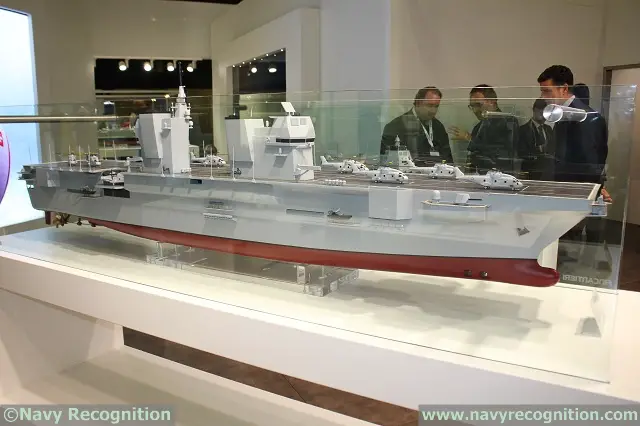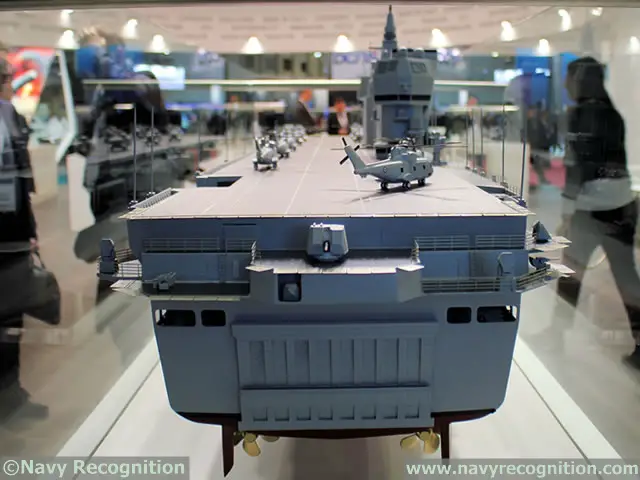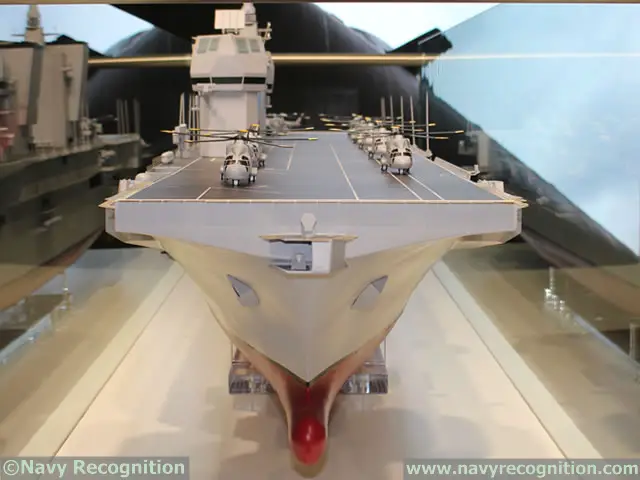Breaking news
Rolls-Royce Completes 1st MT30 Gas Turbine FAT for Italian Navy’s Future 20000 Tons LHD.
| 2017
|
|
|||
 Rolls-Royce will provide two MT30 gas turbines to power the Italian Navy’s new 20,000 tonne Landing Helicopter Dock (LHD) multi-purpose amphibious vessel Rolls-Royce will provide two MT30 gas turbines to power the Italian Navy’s new 20,000 tonne Landing Helicopter Dock (LHD) multi-purpose amphibious vessel |
|||
|
|
|||
|
Don Roussinos, Rolls-Royce, President – Naval, said: “Successful completion of the factory acceptance test is a significant achievement for everyone involved in the LHD Programme. Producing 36 to 40 megawatts the MT30 gas turbine is the world’s most powerful in-service marine gas turbine with the highest power density and will deliver a high power output in a compact space – an essential factor for naval propulsion.
“We’re extremely proud that the MT30 will power the new Landing Helicopter Dock and we very much welcome Fincantieri as the latest customer for our MT30 gas turbine which we believe will provide them with the optimum solution for the needs of the vessel they will build for the Italian Navy.” The factory acceptance test, which has to be completed before the gas turbine can be delivered, was carried out at the Rolls-Royce Test Facility in Bristol. The engine was put through a week of rigorous performance tests, witnessed by representatives from Fincantieri and the Italian Navy. |
|||
|
|
|||
 Scale model of the Italian Navy future 20,000 tons LHD on display by Fincantieri during Euronaval 2016. Scale model of the Italian Navy future 20,000 tons LHD on display by Fincantieri during Euronaval 2016. |
|||
|
|
|||
|
The MT30 is derived from Rolls-Royce Trent aero engine technology and builds on over 45 million hours of operating experience and ultra-high reliability. It is initially built as separate modules on the same build line as the Rolls-Royce Trent aerospace engines in Derby. It is then assembled at the company’s Bristol facility.
Rolls-Royce MT30s are also being installed in the Royal Navy’s new Aircraft Carriers HMS Queen Elizabeth and Prince of Wales and the Type 26 Global Combat Ship. They are also in service with the US Navy’s Freedom class Littoral Combat Ship, will power the USS Zumwalt class destroyers and the Republic of Korea Navy’s latest Daegu Class Frigate programme. |
|||
|
|
|||
 Scale model of the Italian Navy future 20,000 tons LHD on display by Fincantieri during Euronaval 2016. Scale model of the Italian Navy future 20,000 tons LHD on display by Fincantieri during Euronaval 2016. |
|||
|
|
|||
|
Future 20,000 tons LHD
The unit will be approx. 245 meters long with a maximum speed of 25 knots. It will be equipped with a combined diesel and gas turbine plant (CODOG) and will be able to accommodate on board over 1,000 people, of whom more than 700 military or civilian transported people. The LHD's main mission is the transport of people, vehicles and loads of different kinds and in their transfer on land in port areas through on board systems and in not equipped areas with various kinds of vessels (such as the small LCM landing craft units with a load capacity up to 60 tons, four of which can be admitted, launched, and recovered through a flooded basin, located on the stern of the vessel). The LHD’s military profile use provides transport and landing, in equipped and non-equipped areas, of troupes, military vehicles, logistic equipment, using the provided features and means of transfer. The civil profile use provides: • healthcare and hospital support • transfer and landing of people and wheeled or crawled means of transport in equipped and non-equipped areas • supply of drinking water to land through onboard desalination plants or storages • supply of electricity to land with 2000 kw of power and its distribution through containerized conversion and distribution units • possibility of accommodating specialized staff on board or hosting up to 700 civilian personnel, plus the same number in containerized residential units • rescue operations base through helicopters and boar staffing vessels |
|||
|
|
|||
 Scale model of the Italian Navy future 20,000 tons LHD on display by Fincantieri during Euronaval 2016. Scale model of the Italian Navy future 20,000 tons LHD on display by Fincantieri during Euronaval 2016. |
|||
|
|
|||
|
Equipped with wide embarkment areas of about 4500sq. meters withindock-garage and hangar-garage and a continuous open deck, able to receive wheeled vehicles of various kinds, containers and helicopters, the unit can perform several military and civil missions.
The different areas of cargo securing are accessible through stern and side ramps, and cargo handling will be managed by internal ramps and elevators. On board there will be a fully equipped hospital, complete with operating rooms, radiology and analysis rooms, a dentist’s office, and a hospital rooms capable of hosting 28 seriously injured patients (further admissions are possible through duly equipped container modules). |
|||



























